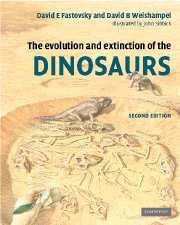
New Aspects of Mesozoic Biodiversity
Springer | 2010-07-29 | ISBN: 3642103103 | 185 pages | PDF | 2 MB
The proposed book is an edited volume which contains a thematic set of seven novel papers on contemporary issues of fossil vertebrates that includes new insights of tetrapod evolution during Palaeozoic and Mesozoic eras, discovery of new vertebrate fossils including dinosaur from different continents, new information on palaeo-osteohistology and palaeobiogeography of the Indian plate during the end Mesozoic. All the seven papers of the proposed book are extremely significant in the present milieu of interdisciplinary research in areas covering vertebrate palaeontology, palaeobiology, palaeoecology and palaeobiogeography. This book will give a glimpse of the present day state of the art knowledge of these branches of science. The papers of the proposed book are the results of pioneering researches of the concerned scientists who have excellently presented their ideas/views and new discoveries in their contributions making this book intellectually attractive to the researchers in these fields all over the world. The problems and issues addressed in these papers are of general interest, so this book will not only attract the vertebrate palaeontologists but will also arouse interest of the researchers and professionals dealing with evolutionary biology and biodiversity.
Out of seven papers of the proposed book, the first paper offers most valuable information on the recent major advances in palaeobiological researches on Palaeozoic-Mesozoic vertebrates and includes information on new discoveries filling the gaps in the evolution of higher taxa, application of new techniques such as molecular palaeontology, CT scanning of fossil bones and development of new concepts generating novel hypotheses. In the second paper/chapter a brilliant analysis is made on the evolution, diversification and extinction of the reptilian group, Lepidosauria, with its two major components, Rhynchocephalia and Squamata, since its appearance in the Triassic till today. One of the keystones in the evolutionary history of vertebrates is the new information provided by the discoveries of the new vertebrate fossils from different parts of the world. There are two such papers; one of them includes description of the earliest pterosaur of the world discovered from the Triassic sediments of Brazil while another paper is on the recovery and description of a new abelisaurid dinosaur from India. In the field of vertebrate palaeontology study of bone microstructure is a recent challenging development, which provides substantial information on the palaeobiology of the fossil animals. In one of the papers, the authors described the bone microstructure of a Triassic kannemeyeriid dicynodont from India and deciphered rapid osteogenesis and overall fast growth of the taxon with three distinct ontogenic stages. The penultimate paper/chapter deals with the Late Mesozoic Indian biota, their endemism, cosmopolitanism and evolution in the background of end Cretaceous mass extinction event as well as the extensive Deccan basalt eruption while the last paper/chapter compiles latest information on the tectonic evolution of the Indian plate with its biogeography during the Cretaceous-Tertiary period testing the models of geodispersal and vicariance.
This book will generate interest to professionals, researchers, teachers and graduate students of vertebrate palaeontology, geology and zoology of all the Universities as well as the researchers associated with the Natural History Museums located in different parts of the world. Besides, the academic or professional societies such as Geological Society of London, Palaeontological Association, UK; Society of Vertebrate Paleontology, USA; Palaeontological Society of India, Palaeontological Association, France; Palaeontological Society of China, Palaeontological Association of Australasia will also be interested to keep a copy.










